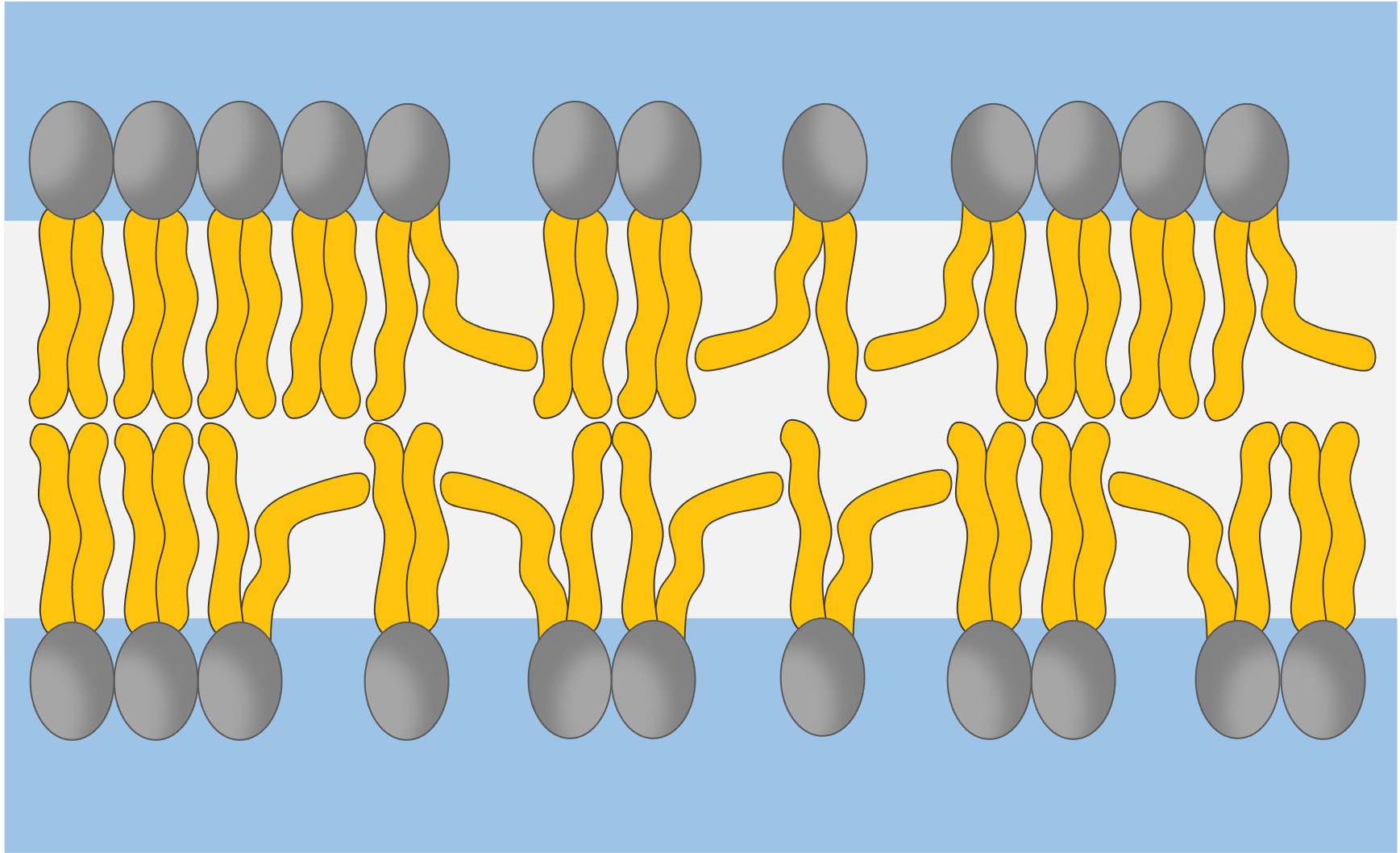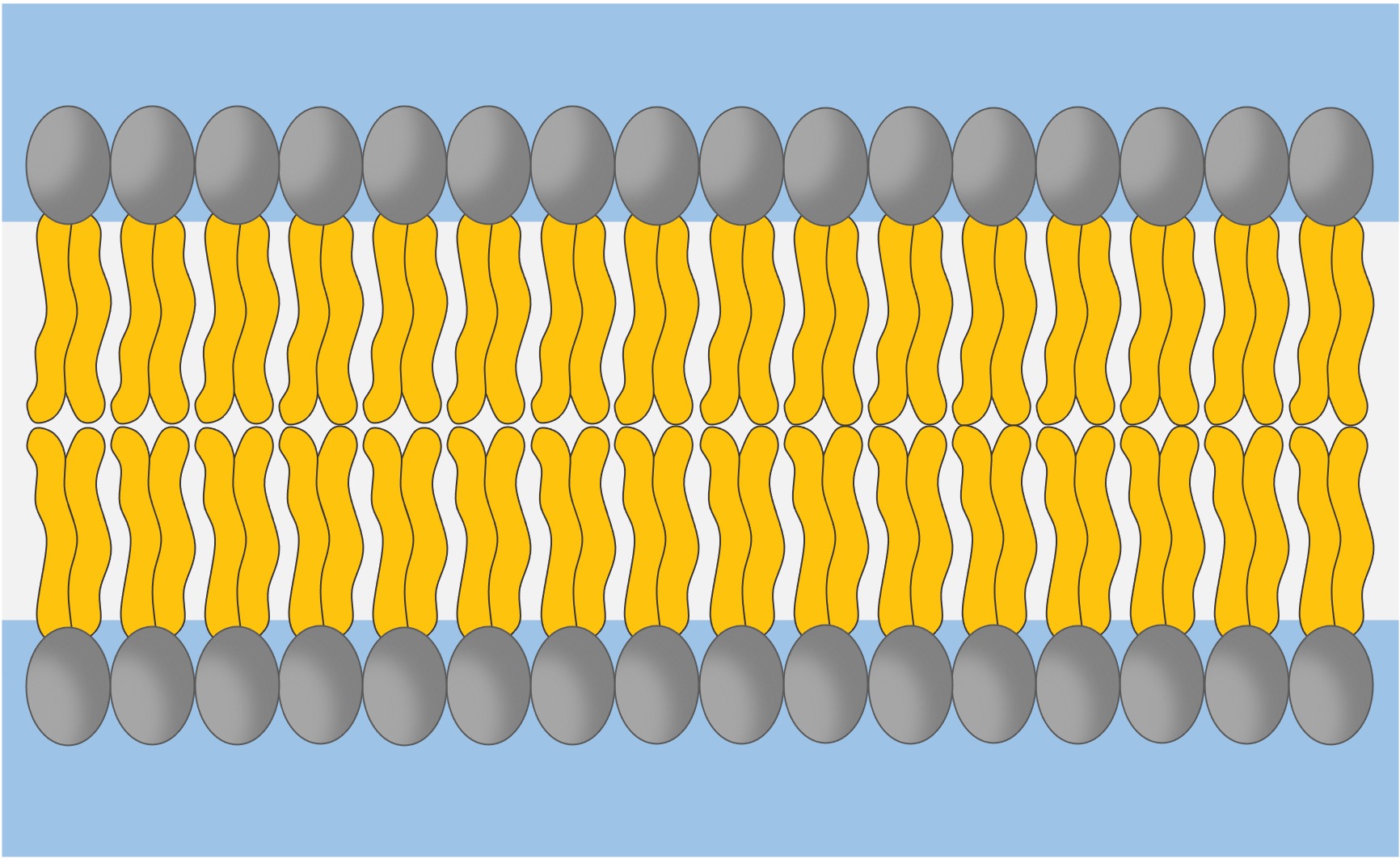

Membrane Fluidity
Cell membranes are fluid, meaning they are not fixed in position and can adopt amorphous shapes
-
The fluidity of a membrane is affected by the composition of fatty acids within the phospholipid bilayer
Unsaturated fatty acids have double bonds in their lipid chain which results in a kinked hydrocarbon tail
-
This means the lipids are harder to pack together, lowering their viscosity (and increasing fluidity)
-
Unsaturated fatty acids in lipid bilayers also have lower melting points, so membranes are more fluid and flexible at temperatures experienced by a cell.
Saturated fatty acids have no double bonds in their lipid chain which results in a straight hydrocarbon tail
-
This means the lipids will be easier to pack together, increasing their viscosity (and lowering fluidity)
-
Saturated fatty acids have higher melting points and make membranes stronger and more stable at higher temperatures
Many organisms will adjust the composition of lipids in their membranes in order to regulate membrane fluidity (homeoviscous adaptation)
-
The general trend is an increase in unsaturated fatty acids at lower temperatures and an increase in saturated fatty acids at higher temperatures
-
Regulating membrane fluidity is particularly important in poikilothermic organisms whose internal body temperatures vary considerably (e.g. Antarctic fish)
Fatty Acid Composition

Unsaturated Fatty Acids





